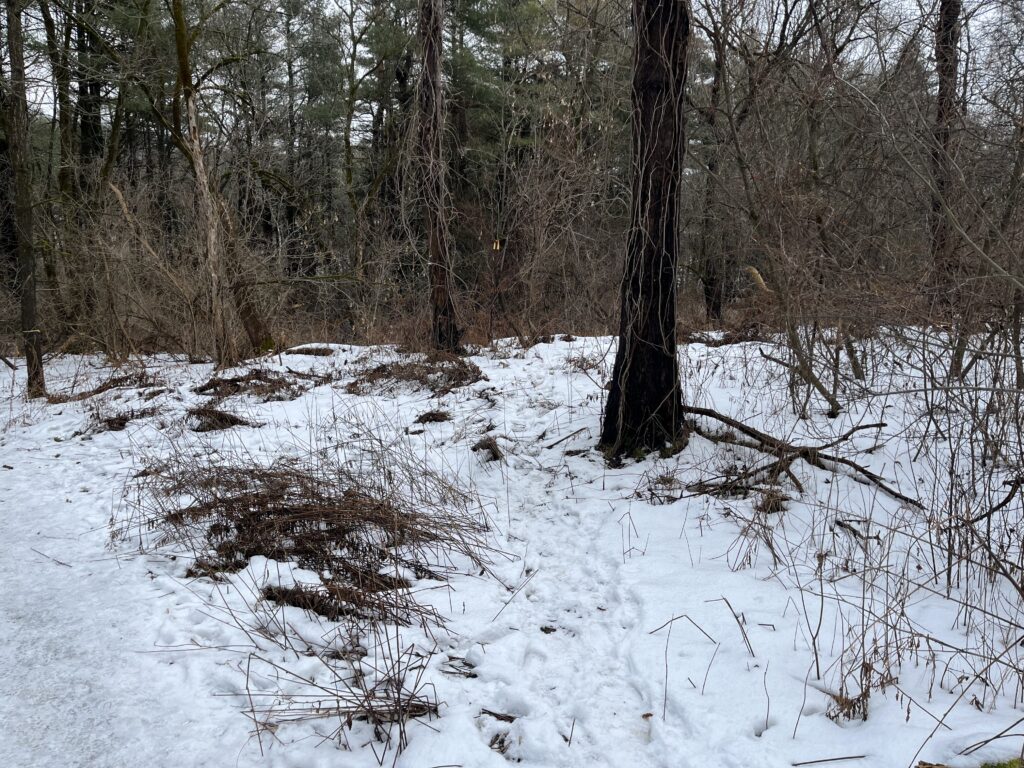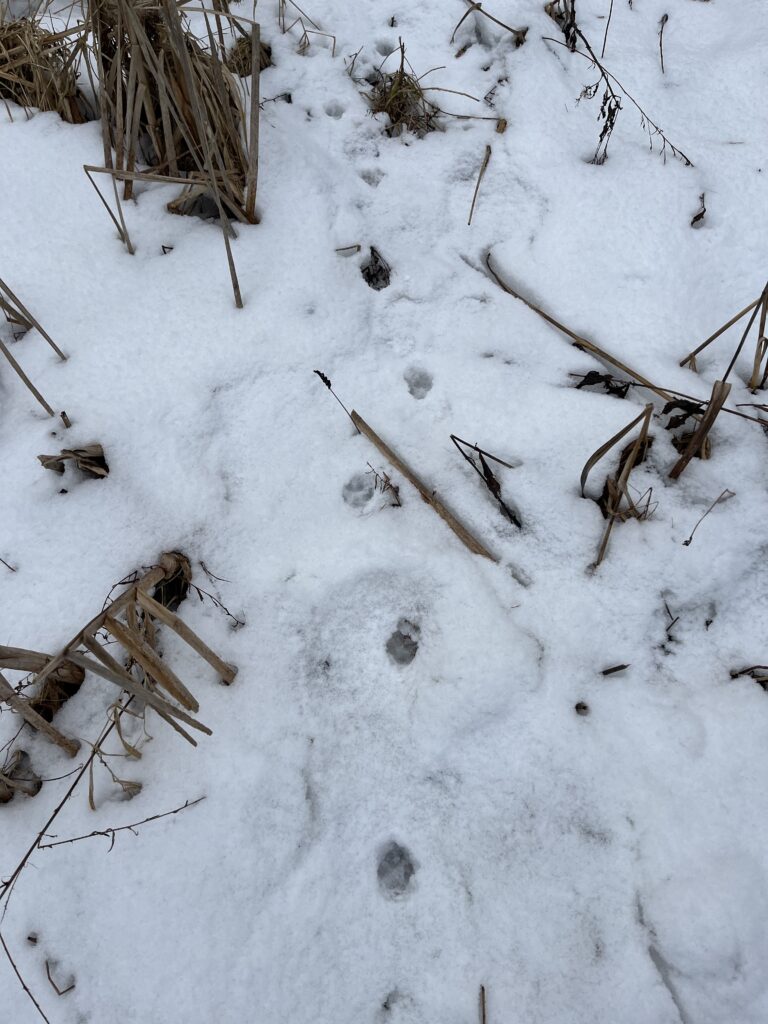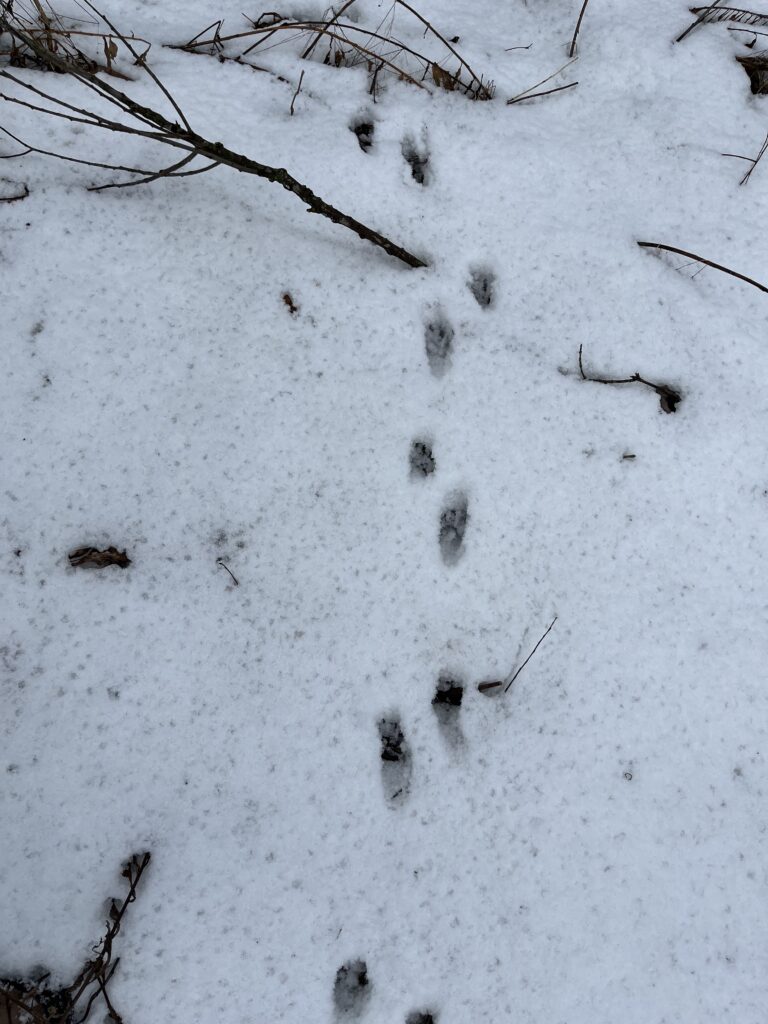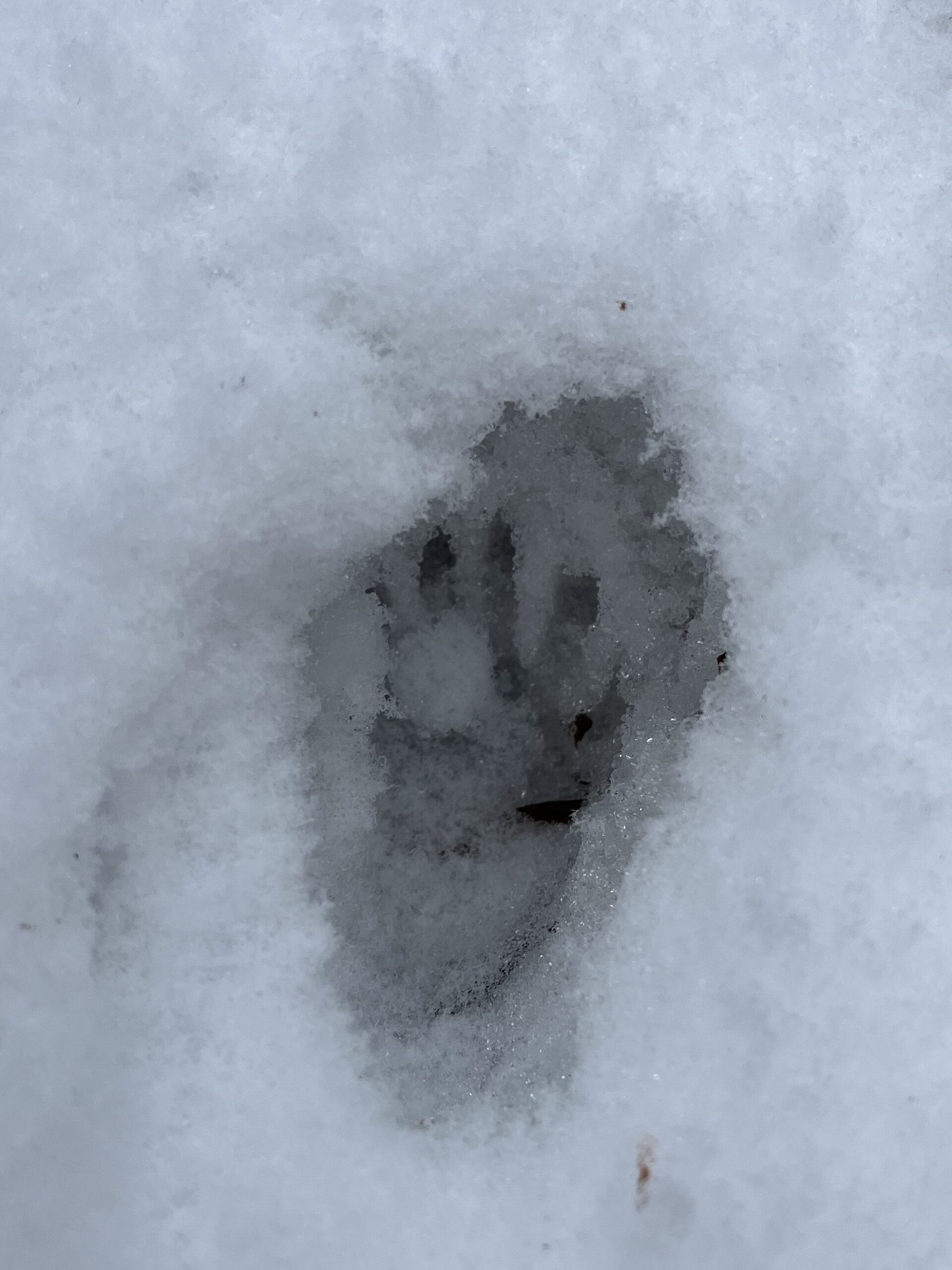
My phenology spot, just off the beginning of the trail into Centennial Woods, is a gorgeous grove of goldenrods and asters in the spring and summer. The last time I visited, the dead stalks of goldenrod filled the area and prevented any real access to the ground. However, now that it’s further into the winter season, the stalks have decayed more significantly and only a few bunches of stalks remain. The butternut and boxelder trees remain dormant, waiting for spring to return.

Immediately around my spot, there weren’t many tracks to find or signs of animals in general. There were a bunch of tracks like this that could be a wild animal, but they were really close to the beginning of the path, and the area was dominated by human tracks, so more likely than not this was just somebody’s dog. But I figured this would be the case, so I went out with my buddy Liam and explored throughout Centennial where there was more undisturbed snow.


These tracks are very obviously that of a raccoon. We found a lot of tracks like this near the stream that flows through the woods, which makes sense not only because the raccoons need to drink water, but because they are known to rinse off their food before eating it. These tracks have large hind footprints pretty much right next to the smaller front footprints, which is indicative of raccoon prints. What seals the deal is the hand-like shape of the back paw with long slender fingers, which according to the tracks and scat guide is definitely a raccoon.